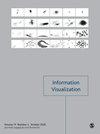Visualizing congestion at large-scale events with an interactive-view system incorporating proximity-based networks
IF 1.8
4区 计算机科学
Q3 COMPUTER SCIENCE, SOFTWARE ENGINEERING
引用次数: 0
Abstract
Contact with infected individuals can lead to the spread of infectious diseases. During the COVID-19 pandemic, people were strongly urged to avoid the three Cs: closed spaces, crowded places, and close-contact settings. To hold large-scale events under such circumstances, reducing crowd congestion is key to preventing the further spread of infection. Therefore, identifying the pedestrian behaviors and walking patterns that pose a high risk of infection and utilizing them for effective crowd control is necessary. In this study, we propose an approach for visualizing walking paths while maintaining visibility from large-scale human flow data and representing both spatial and temporal features. The proposed method enables the visualization of the pedestrian proximity status as a network containing three components: a proximity network, proximity path, and pedestrian statistics that interact with each other. By operating the three components of this system interactively, we can observe the spatial and temporal features of situations with a high risk of infection during crowd congestion. An example of the operation of this system is presented by visualizing real-world human flow data measured at an event venue and identifying the proximity of the pedestrians.利用包含近距离网络的交互式视图系统可视化大型活动的拥堵情况
与感染者接触会导致传染病的传播。在 COVID-19 大流行期间,人们强烈呼吁避免三个 C:封闭空间、拥挤场所和密切接触环境。在这种情况下举办大型活动,减少人群拥挤是防止传染病进一步传播的关键。因此,有必要识别具有高感染风险的行人行为和行走模式,并利用它们进行有效的人群控制。在本研究中,我们提出了一种可视化步行路径的方法,同时保持大规模人流数据的可视性,并体现空间和时间特征。所提出的方法可将行人接近状态可视化为一个网络,其中包含三个组成部分:相互影响的接近网络、接近路径和行人统计数据。通过交互式操作该系统的三个组件,我们可以观察到人群拥堵时高感染风险情况的空间和时间特征。本系统的一个操作示例是将在一个活动场所测量到的真实人流数据可视化,并识别行人的接近程度。
本文章由计算机程序翻译,如有差异,请以英文原文为准。
求助全文
约1分钟内获得全文
求助全文
来源期刊

Information Visualization
COMPUTER SCIENCE, SOFTWARE ENGINEERING-
CiteScore
5.40
自引率
0.00%
发文量
16
审稿时长
>12 weeks
期刊介绍:
Information Visualization is essential reading for researchers and practitioners of information visualization and is of interest to computer scientists and data analysts working on related specialisms. This journal is an international, peer-reviewed journal publishing articles on fundamental research and applications of information visualization. The journal acts as a dedicated forum for the theories, methodologies, techniques and evaluations of information visualization and its applications.
The journal is a core vehicle for developing a generic research agenda for the field by identifying and developing the unique and significant aspects of information visualization. Emphasis is placed on interdisciplinary material and on the close connection between theory and practice.
This journal is a member of the Committee on Publication Ethics (COPE).
 求助内容:
求助内容: 应助结果提醒方式:
应助结果提醒方式:


